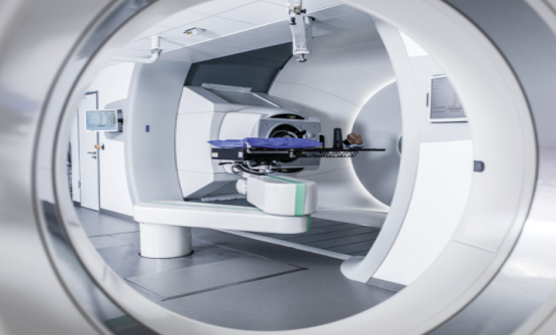Towards automated prompt-gamma treatment verification: Identification and classification of clinically relevant deviations
Planned secondments: IBA (Belgium), UMCG (Groeningen).
Project description
Millimetric control of the penetration depth of protons within a tumor of a patient at which proton beams deposit maximum dose is key to the success of a treatment of cancer by proton therapy. This is achieved by modulation of their energy but highly vulnerable to uncertainties and anatomical changes. Generous safety margins around the target volume are currently used to consider these uncertainties, causing substantial dose deposition to normal tissue. Therefore, an in-vivo verification of the proton range in the patient is highly desirable. A promising approach is prompt γ-ray imaging (PGI). This technique was for the first time clinically implemented in Dresden in 2015 using a so-called slit-camera prototype developed in the EU project ENVISION under the lead of IBA. Today, PGI is routinely applied in Dresden within a clinical study (PRIMA) with the goal to systematically determine its clinical benefit. In-room control CTs acquired in treatment position serve as ground truth information for potentially occurring anatomical changes. For each treatment acquisition, the PGI system delivers data that is rich in conclusions that can prove complex to disentangle and thereby suited to AI-based classification models. For online-adaptive proton therapy, a close-to-real time automated processing and interpretation of the prompt-gamma-based treatment verification data is crucial and one of the main goals of the project.
The goal of the project is to develop a near-real-time automated decision-making tool based on prompt gamma information on clinically relevant treatment deviation and their source. This will ultimately allow a reduction of currently used safety margins, reducing the dose delivered to normal tissues, thus potentially reducing side-effects.
In the first part of the project the student will participate in the data acquisition and evaluation of PGI within the PRIMA study, aiming at automatize the PGI data processing workflow. This will fundamentally pave the way for its usability as near real-time treatment verification. Next, the real-time capability of the approach will be assessed, by evaluating (1) the processing time of the PGI and related treatment data, (2) the time for the spot-wise range shift determination and (3) the time for the automated AI-based decision making. In addition, the potential margin reduction of PGI treatment verification will be quantified and an automated confirmation of a PGI-triggered treatment intervention due to a clinically relevant deviation will be developed. Finally, the PGI-based range verification will be compared with the alternative range probing approach, developed by UMCG, on phantom level as enabled by RAPTOR synergy, potentially using the end-to-end phantom developed at MedUniVienna.
The student will be employed at the National Center for Radiation in Oncology-Oncoray (Dresden) and will be registered for the doctoral program at the Technical University of Dresden under the supervision of Prof. Christian Richter.
TUDR is one of the leading and most dynamic universities in Germany. OncoRay represents a new, future-oriented research effort in the field of radiation research in oncology, building on the international reputation and extensive research infrastructure of the Dresden group.
For more information concerning the research project please contact: Christian Richter


Stefanie Bertschi
Early-Stage Researcher at Oncoray
I am Stefanie Bertschi, I am 26 years old, Swiss and I did both my Bachelor and Master in Physics at ETH Zurich. Next to my studies, I love to play volleyball and being in the mountains for skiing and hiking.
I did both my Semester and Master thesis at the Center for Proton Therapy at the Paul Scherrer Institute. I was fascinated, how close research is to practical application and how it has a direct impact on improving treatments and therefore saving peoples’ lives. The RAPTOR project allows me to continue in the field of Proton Therapy and to collaborate with people from various universities and facilities.
I chose the PhD position in Medical Physics at Oncoray in Dresden under the supervision of Prof. Christian Richter and with Prof. Stine Korreman from Aarhus university as my mentor. This project is about real-time monitoring of the beam during patient irradiation using Prompt-Gamma-Imaging (PGI). This was first clinically implemented in Dresden using a knife-edge slit-camera prototype. My main focus is the development of an automated decision making tool for treatment intervention based on PGI information. I chose this project as it involves the application of machine learning algorithms as well as participating in a clinical study, therefore gaining direct insights into daily patient treatments. By the end of my PhD, I hope to provide some tools to help facilitating PGI in an adaptive workflow in future. This would enable clinicians to reduce safety margins and therefore sparing a considerable amount of healthy tissue while at the same time offering the possibility for online QA, which is much needed to support real-time adaptive proton therapy.

OncoRay
PROJECT BENEFICIARY
The vision of OncoRay is to significantly improve the treatment of cancer by biologically personalized and technologically optimized radiation therapy. About 80 scientists cooperate in cross-disciplinary research groups in medicine, physics, biology and data science.


